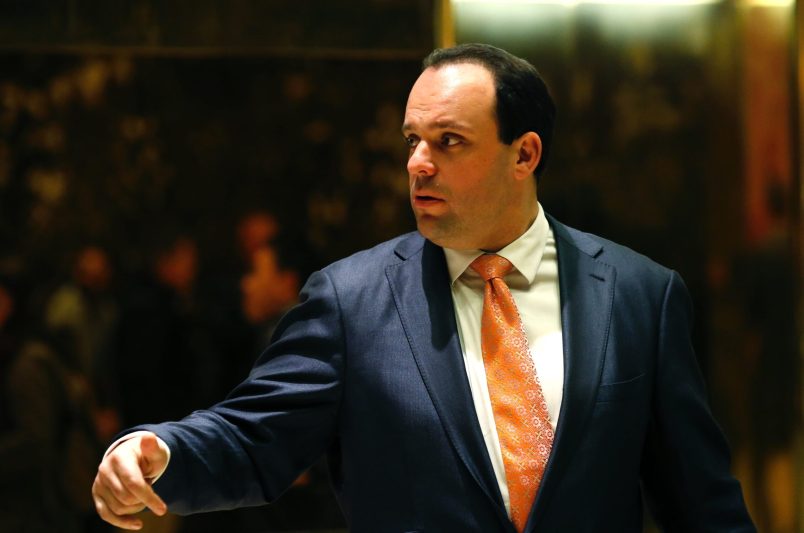As you probably know by now, Nate Silver is leaving the NYTimes for ESPN/ABCNews. So why’d he leave? There’s a very interesting discussion about it in today’s Playbook put out by Politico’s Mike Allen.
Now, it’s worth noting that Silver has had a fairly contentious relationship with Politico that has largely consisted of Politico’s trolling Silver’s methodology and predictions and then getting shown up by Silver’s pretty good record of predicting political outcomes. To put it more bluntly, Silver repeatedly embarrassed Politico and the bigs at Politico did not forget.
I say this all as preface, not to discredit Politico’s account – because there’s a lot of very interesting information – but simply to keep it real since there’s an undertone of Politico-ness nonetheless (emphasis by me added in bold – sometimes for substance, others to note Politico’s hurt feelings) …
BEHIND THE CURTAIN – COURTING NATE SILVER: The battle for data whiz Nate Silver, fought secretly and aggressively by several of the nation’s top news executives for the better part of a year, was won by ESPN and ABC News (both part of The Walt Disney Company) after the 35-year-old was promised extensive air time, a role in the Oscars (airing on ABC through at least 2020), and a digital empire that may include websites devoted to weather, education, economics and other topics. When it came to money, Silver was aggressive but not greedy, according to people familiar with the negotiations. Instead, he was focused on how he could expand the franchise he had built around FiveThirtyEight(the total number of electoral votes). FiveThirtyEight.com began as a standalone blog in 2008, and became part of NYTimes.com in 2010 as part of a three-year licensing agreement that ends next month.
In a stroke of luck for Silver, the negotiations began shortly after the frenzy over his 2012 forecasts showing President Obama would be easily reelected, which had become a running topic on cable news and late-night television – and even drew a shout-out from the president himself. There was early interest from NBC and Bloomberg. But for many months, Silver’s conversations have pitted ESPN/ABC against The Times. Executive Editor Jill Abramson led the Times negotiations, and retaining Silver was such as high priority that publisher and chairman Arthur Ochs Sulzberger Jr. and CEO Mark Thompson were involved. The reasons Times executives were so obsessed with Silver were both financial and psychic:
–On the financial side, Silver was a huge trafficdriver for NYTimes.com in political years. On Election Day 2012, The New Republic’s Mark Tracy called Silver a “One-Man Traffic Machine for the Times” and “The Times’s biggest brand”: “”FiveThirtyEight is drawing huge traffic,’ … Abramson told me … ‘What’s interesting is a lot of the traffic is coming just for Nate.’ … [E]arlier this year, somewhere between 10 and 20 percent of [visits to The Times’s politics coverage] included a stop at FiveThirtyEight, last week that figure was 71 percent. …Silver’s blog has buoyed more than just the politics coverage, becoming a significant traffic-driver for the site as a whole. Earlier this year, approximately 1 percent of visits to the New York Times included FiveThirtyEight. … Yesterday, it was 20 percent.”
–On the psychic side, Abramson and Washington Bureau Chief David Leonhardt, another key player in the drive to keep Silver, saw his brand-within-a-brand as a wave of the future. They wanted Silver to bring his secret sauce to other areas of coverage. And they want to develop other Nate Silvers, in the mold of Andrew Ross Sorkin’s pioneering DealBook. So Silver’s role as the template increased his value to The Times.
Silver had told The Times that he wanted to expand to weather, economics and anyplace else at The Times that had statistics and numbers he could bring to life. He had already begun doing that, with “Claims on I.R.S. Are Challenged By Probability,” which ran in the paper, as did an examination of Chief Justice John Roberts’s use of statistics, along with “Health Care Drives Increase in Government Spending” and “Congressional Proposal Could Create ‘Tax Bubble.'” In December, Silver had his first front-page story in the print paper.
Early this year, The Times laid out a plan that would give Silver a staff of six to 12 bloggers to focus on a variety of topics, modeled on Ezra Klein’s Wonkblog at The Washington Post. The plan was so specific that it named Megan Liberman, an up-and-coming deputy news editor at The Times, as Silver’s editor. As recently as last month, some executives at The Times were confident Silver would stay, mainly because they had given him everything he had asked for.Silver is very interested in prestige, and the prestige of The Times was a huge deal to him. But Silver, who first made his name with forecasts for Major League Baseball players, still loves sports. At times, he felt unwelcome in the Times Sports section, and seemed to struggle to fit into its culture. The section is among the most innovative at the paper, but not in the areas that are Silver’s wheelhouse.
ESPN’s recruitment drive was led by President John Skipper and John Walsh, executive vice president and executive editor, who have brought a more literate style to ESPN and are pushing the organization in a more analytical direction. Silver’s youth and credibility were hugely attractive. The model they proposed to Silver was Bill Simmons, “The Sports Guy,” who has a personal megabrand within the ESPN brand through his “B.S. Report,” blogs and podcasts. ESPN kept Simmons in part by making him editor-in-chief of a new ESPN website, Grantland.com, devoted to long-form journalism. In the quest for Silver, ESPN enlisted ABC News, which could provide a high-profile platform during elections and conventions. And Silver clicked with ABC’s political personalities: George Stephanopoulos, Jonathan Karl, Jeff Zeleny and Rick Klein.
ESPN has deep pockets, and the rich, multi-platform offer to Silver, funded mostly by ESPN, is a drop in the bucket. Under the deal, to be announced soon, his flagship will return to FiveThirtyEight.com, which currently clicks through to NYTimes.com. The business model mirrors Grantland’s: a strong, independent brand that ladders up to the bigger brand of ESPN (and, in this case, ABC News). Nate will appear on the air on ESPN and ABC, and will get “verticals,” or web hubs, devoted to a variety of new topics. He’s very interested in education, so there’s been a lot of conversation about that. And, of course, weather and economics.His Oscars predictions did well for The Times, and now he’ll work for the TV home of the Oscars.
Silver informed Abramsonof his decision on Friday. She was none too pleased – a yearlong strategy, up in smoke. And Abramson is sensitive to the perception of Disney raiding The Times: Don Van Natta Jr., who was part of two Pulitzer-winning teams at the Times and produced muscular exposés on the British tabloid hacking scandal, became a senior writer for ESPN at the beginning of 2012. And Times correspondents Jeff Zeleny and Susan Saulny were named ABC correspondents in February. In response for a request to comment, The Times provided a 21-word statement:”We valued our partnership with Nate, particularly during the 2012 election campaign, and we wish him every success in the future.”
Again, a lot of interesting information laced with some of Politico’s past bruising.
Two points that stand out to me. First: Silver’s apparent interest in bringing his statistical/probabilistic approach to news to a whole slew of new venues like weather, economics, education and more. Personally, as a news consumer, I find this fascinating. And I’m eager to see it. Numbers aren’t the be all and end all of news or understanding the world we live in. But the way that Nate has used them in sports and politics is a super important check on commentators’ innumeracy, groupthink, nonsense and subjectivity. It is, to use that overused word, highly disruptive in a very positive way.
It also deepens my suspicion that Nate had started to get a little bored with politics, at least as his exclusive realm.
I’m also intrigued by the Times focus on this so-called ‘brand within a brand’ model, with Sorkin and Ezra Klein as models. This is in many ways how major media has domesticated blogging (and I do not necessarily mean that in a negative way). It takes some of the voice, idiosyncrasy and focus of blogging and scales it with the resources and audience numbers independents really cannot muster (believe me, this is something I know about).
Now, if I can only get a handle on how Silver and Olbermann are going to get along.







